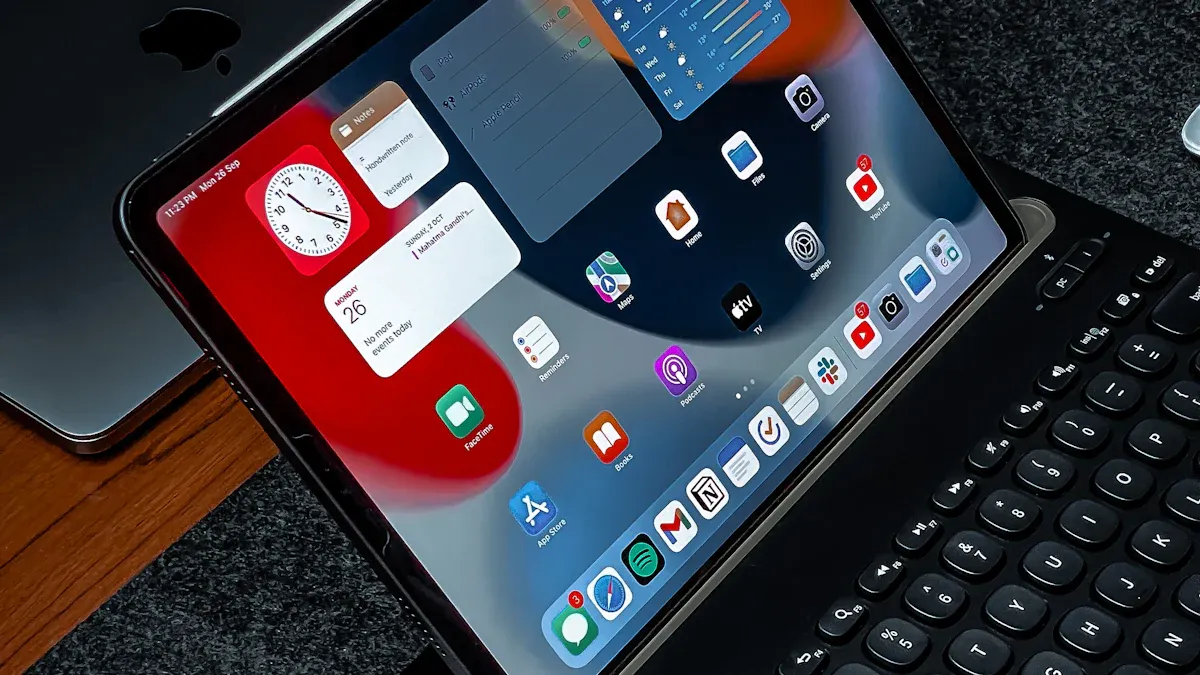
An MVNO solution lets companies give mobile services without owning a network. Businesses use this to join the mobile market fast and save money. The global MVNO market was worth USD 85.5 billion in 2024. It grew a lot because people want cheaper plans and 5GC technology. Many readers want to know how MVNOs work, what types there are, and why picking the right one helps. This blog gives helpful advice for both technical and non-technical people who want to learn more about these things.
Key Takeaways
- MVNOs help companies give mobile services. They do not need to own network equipment. This saves both time and money.
- There are different MVNO types. These are Full, Light, Branded Reseller, and Hybrid. Each type has different control and costs.
- Picking the best MVNO solution depends on business goals. It also depends on market needs and technical skills.
- Good billing, customer care, and network systems must work together. This helps services run smoothly and keeps users happy.
- MVNOs are flexible and can grow easily. They support many networks to serve lots of customers well.
- Following rules and choosing skilled providers is important. This helps avoid legal problems and brings success.
- MVNOs find new business chances by focusing on special groups. They use new tech like 5G and eSIM.
- Do not make common mistakes. These include poor market research, weak network deals, and bad customer service. Avoiding these helps build a strong brand.
MVNO Solution Overview

What Is an MVNO?
A Mobile Virtual Network Operator (MVNO) is a company that sells mobile services but does not own the network equipment. Instead, it rents network access from another company called a Mobile Network Operator (MNO) or a network aggregator. The MVNO creates its own mobile plans and sells them under its own brand name. This helps businesses start selling mobile services fast and with less money.
MVNO solutions help companies launch their own mobile services by providing the tools needed for billing, customer care, and user management. Companies can choose how much control they want — from simply reselling services to managing operations independently.
MVNO vs MNO
The key differences between MVNOs and MNOs are:
- MNOs own all network infrastructure (towers, base stations), hold radio licenses, and operate the entire network.
- MVNOs do not own network equipment or licenses; they lease access from MNOs or aggregators.
- MNOs sell directly to customers and manage all support.
- MVNOs resell services under their brand using another company’s network.
- MNOs control the full network and customer experience.
- MVNOs have limited or no control over the network, depending on their type.
- MNOs serve broad customer bases with general offerings.
- MVNOs often target niche markets with customized plans.
This model allows MVNOs to offer competitive pricing and tailored services, while MNOs focus on network expansion and maintenance.
MVNO in the Mobile Market
MVNOs play a growing role in the mobile industry by increasing competition and driving innovation. They use targeted strategies and new technologies to serve specific customer segments.
| Aspect | Contribution to Competition and Innovation |
|---|---|
| Cost Efficiency | MVNOs leverage existing networks to reduce costs and offer lower prices. |
| Targeted Service Offerings | MVNOs create specialized plans for niches (e.g., seniors, travelers), expanding consumer choice. |
| Rapid Market Entry | MVNOs launch quickly through partnerships with MNOs, enhancing market agility. |
| Innovation and Flexibility | MVNOs adopt new tech like 5G, eSIM, and IoT faster than traditional carriers. |
| Enhanced Customer Experience | Custom plans and better service from MVNOs push MNOs to improve. |
| Regulatory Support | Supportive regulations enable MVNO growth and service diversity. |
| Example | Celcom Berhad’s 5G trial in 2023 shows MVNOs leveraging new tech for customer benefit. |
MVNO solutions can be deployed via on-premise, cloud-based, or hybrid models, used widely across Europe, Asia-Pacific, South America, and the Middle East. Each model offers different advantages in scalability and control.
Leading MVNO solution providers in the US include:
- Sheerbit Technologies: Offers flexible telecom software with billing and analytics.
- Mint Mobile: Uses T-Mobile’s 5G network, offering affordable prepaid plans.
- Xfinity Mobile: Leverages Verizon’s network and Comcast’s internet for bundled deals.
- Google Fi: Uses multiple networks with smart switching, ideal for travelers.
- Metro by T-Mobile, Consumer Cellular, H2O Wireless: Serve niche groups like seniors and immigrants.
These examples highlight the diversity and strength of the US MVNO market, enabling businesses to reach new customers without building infrastructure.
MVNO Solution Types
Full MVNO
Features
Full MVNOs own and operate key network components such as HLR, GGSN, SMSC, and session controllers. They manage SIM provisioning, voice, data, and subscriber services independently. This allows full control over pricing, plan design, and added features like multi-network roaming and eSIM support. They negotiate radio access with MNOs but maintain autonomy over core services.
| Feature | Full MVNO Characteristics | Comparison to Other MVNO Types |
|---|---|---|
| Core Network Ownership | Owns and manages core network elements (HLR, HSS, GGSN, billing engines, SIM provisioning) | Other MVNOs rely on MNO infrastructure, owning little or no core components |
| SIM Card Control | Issues own SIM cards and supports eSIM technology | Others typically use MNO-issued SIMs or have limited control |
| Billing and Pricing | Fully controls billing, pricing models, invoicing, and customer support | Others depend on MNOs for billing or have limited control |
| Mobile Plan Design | Can design custom plans, offer value-added services, and implement advanced QoS | Others have restricted design, often limited to MNO presets |
| Investment & Complexity | Requires significant investment and technical expertise | Others require less investment but have less autonomy |
Use Cases
Full MVNOs serve both consumers and enterprises, especially in sectors like healthcare, logistics, automotive, and manufacturing. They provide specialized IoT and connectivity solutions. Europe leads in Full MVNO adoption, followed by North America and Asia-Pacific. These operators use 5G and eSIM to enhance service quality and integrate with enterprise IT systems for tailored solutions.
Light MVNO
Features
Light MVNOs rely entirely on the host MNO’s network infrastructure. They may issue their own SIMs but often use MNO-provided ones. Their focus is on branding, marketing, customer service, and pricing. They lack network control, which reduces setup cost and time. While they can customize some service plans, their innovation is limited compared to Full MVNOs.
| Aspect | Light MVNOs | Full MVNOs |
|---|---|---|
| Network Infrastructure | Fully dependent on the host MNO's network | Own and manage core network elements |
| SIM Cards | May or may not issue own SIMs | Issue and control their own SIM cards |
| Operational Control | Limited control over network operations | Full control over network services and flows |
| Service Offerings | Focus on branding, marketing, customer service, pricing, and value-added services | Full flexibility in service design and innovation |
| Investment & Launch | Lower upfront costs, faster market entry | Higher investment, longer setup time |
Use Cases
Light MVNOs target specific demographics such as teens, budget-conscious users, or international travelers. They emphasize customer experience and niche marketing. Their low-cost entry makes them ideal for testing new markets or serving underserved communities.
Branded Reseller
Features
Branded reseller MVNOs are the simplest and fastest to launch. They rebrand the MNO’s services entirely, using the host’s network, SIMs, billing, and support. Their role is primarily in marketing, sales, and customer acquisition through physical or online stores.
Use Cases
These MVNOs help MNOs expand reach and utilize spare network capacity. For example, Rain in South Africa operates as a data-only provider with strong retail presence. This model suits brands aiming for rapid market entry with minimal technical investment.
Hybrid Models
Hybrid MVNOs combine features of Full and Light MVNOs, offering a balance between control and cost. They provide more autonomy than Light MVNOs but avoid the complexity of Full MVNOs.
- Hybrid MVNOs integrate elements from both Light and Full models, enabling partial independence.
- Light MVNOs focus on marketing and sales, relying on MNOs for network services.
- Full MVNOs operate their own core network components, offering maximum control.
- Hybrid models balance infrastructure investment with operational agility.
- This approach allows differentiation through tailored plans and closer customer management.
Hybrid MVNOs often handle billing and customer care internally while leasing radio access, making them ideal for businesses seeking scalability and brand control without full network ownership.

